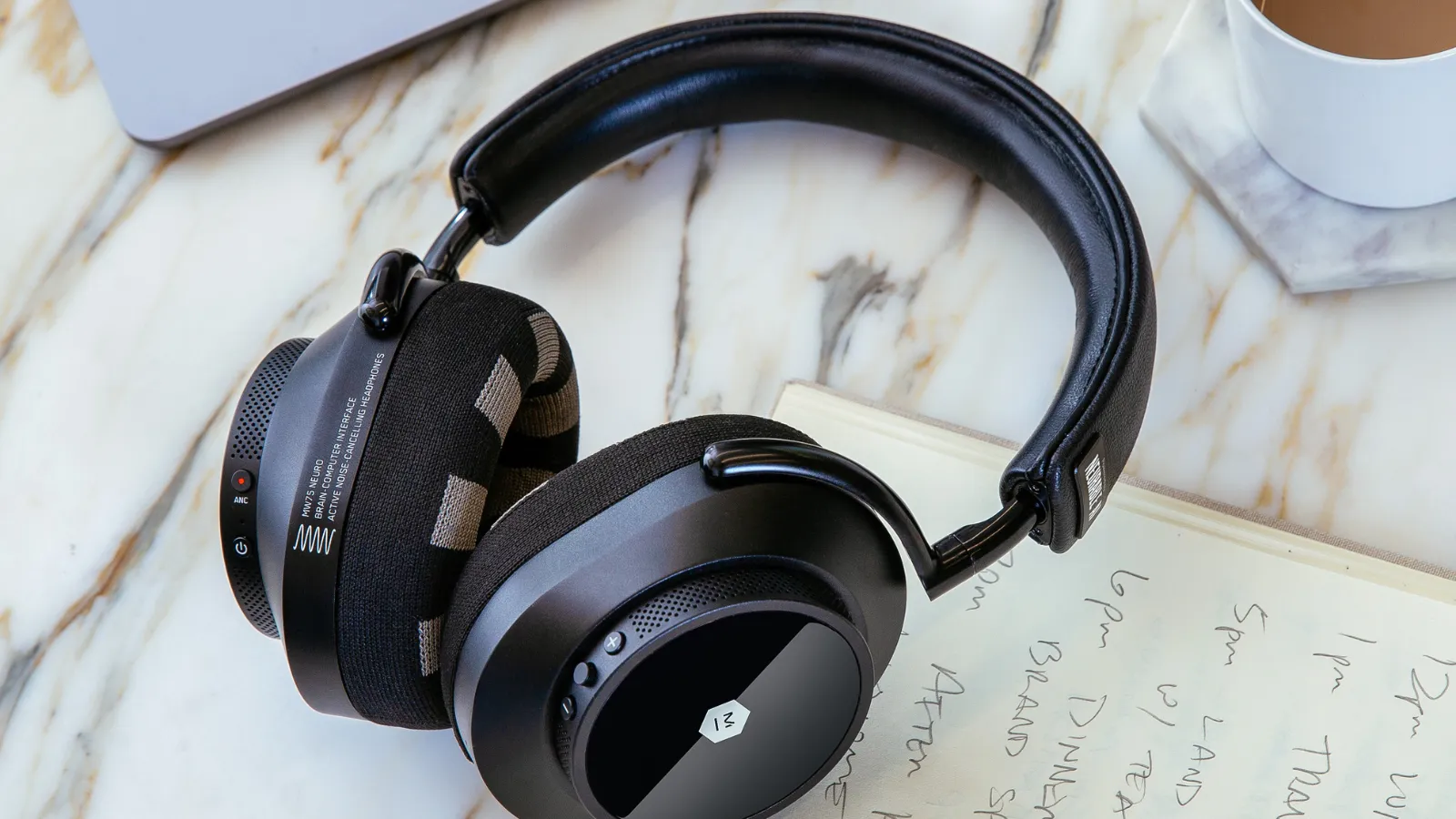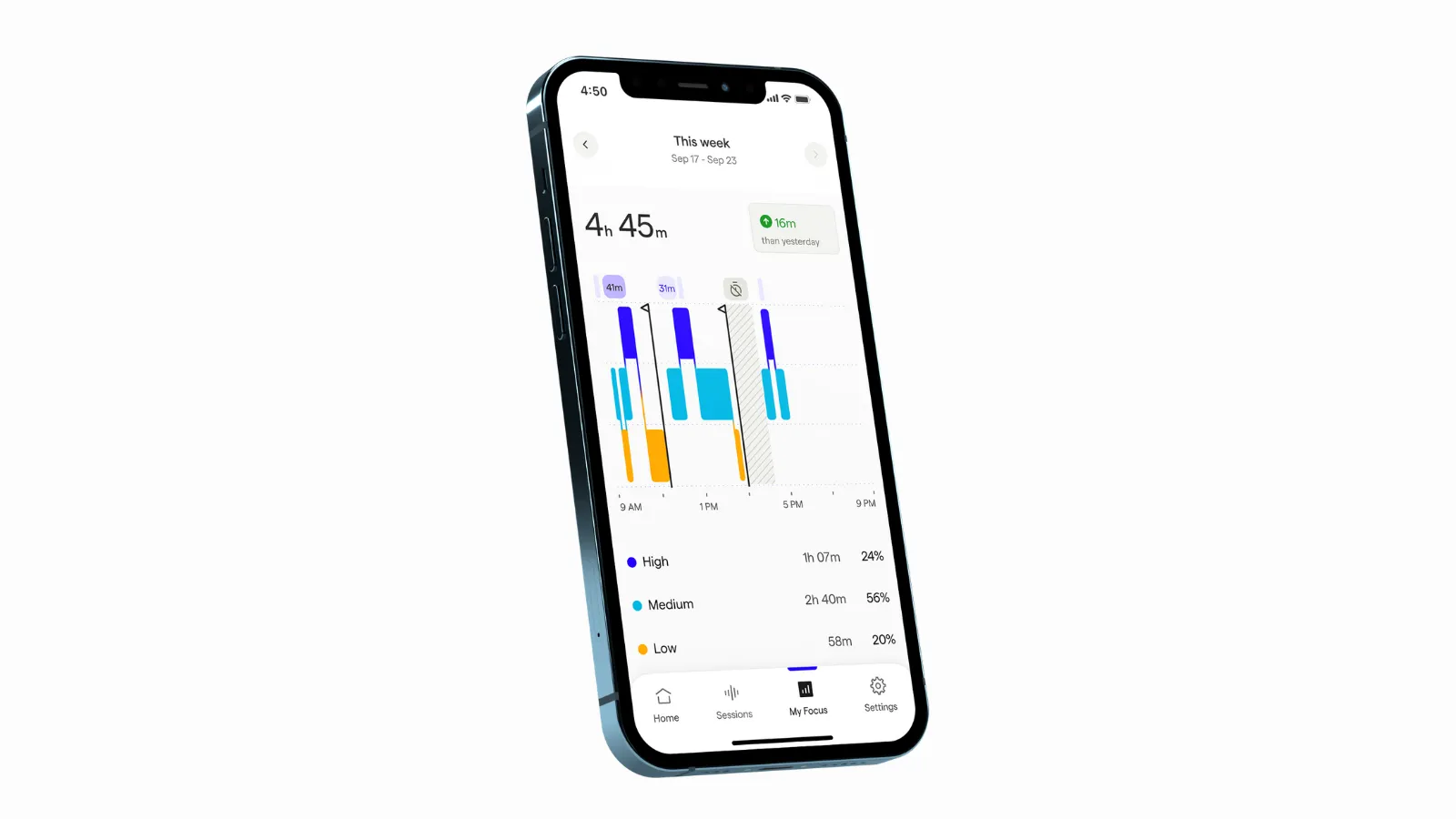
Would you wear a $700 pair of headphones if it meant you could track your brain activity and help you focus better?
A Boston-based startup called Neurable hopes you will—and it’s aiming to make wearable electroencephalography (EEG) devices more accurate, responsive, and fashionable with today’s launch of the MW75 Neuro headphones.
The brain-reading headphones collect real-time brain data through a series of EEG sensors—coupled, of course, with artificial intelligence—and transmit the info to an Android or iOS app. Wearers can then see the information on a live-time dashboard and modify their behavior to stay focused and stave off fatigue and burnout.

“It's essentially teaching you how to focus and get better at understanding how that feels so that you can improve it over long periods of time,” Neurable co-founder and CEO Dr. Ramses Alcaide told Decrypt.
Launched in 2015, Neurable built its sensory device in collaboration with wireless headphone developer Master & Dynamic and researchers at the University of Michigan.
“We spent close to a decade refining the technology, going from large head caps, working our way down to smaller form factors, essentially now getting to headphones, all the while trying to retain a high level of signal quality,” Alcaide said.
In addition to EEG sensors, the MW75 features high-end headphones that come with adaptive noise cancellation, six microphones for clear calls, Bluetooth, and a battery life of 10 hours.

Neurable is the latest entry in a burgeoning consumer electronics category that includes InteraXon, creator of the Muse EEG headband, and Synchron, creator of the insertable Stentrode implant. There's also the yet-to-be-launched NextSense, designed to use EEG data to improve users’ sleep.
EEG is commonly used in medical and research settings, particularly for diagnosing conditions like epilepsy, sleep disorders, or brain injuries. Another use case for EEG technology is in brain-computer interfaces, where researchers use EEG to allow people to control devices with their brain activity.
Stanford University neuroscientist Dr. Walter Greenleaf said that there doesn’t appear to be any risk with devices that measure EEG. “It's an unobtrusive and passive way of collecting information,” he told Decrypt. “So the only risk would be if the information was mis-scored or mischaracterized.”

While he applauded the work Neurable and other consumer-facing EEG developers are doing, he cautioned them not to overstate their capabilities. “If any of these companies were making exaggerated claims like they cure autism by using their device, then that would be a danger, but as a device, per se, they're safe, and they're useful.”
With more and more companies putting EEG devices on the market, Greenleaf said how accurate one device is over another depends on the needs of the wearer.
“If you're trying to identify a focal point for an epileptic seizure, then you need to have the whole head measured,” Greenleaf said. “If you're trying just to understand if someone is focused their attention or whether they're in a relaxed mood, maybe guide them to a more relaxed mood or whether someone's asleep and what stage of sleep they're in, then you don't need that whole harness of electrodes.”
While the list of competitors continues to grow, Alcaide said the focus should be on helping people improve their mental health.
His new product “is for the everyday person,” he said. “You want to get into deep focus mode. You want to be told to take a break in order to prevent burnout because most people take a break when their body is tired, not when their brain is tired.”
The bottom line, he said, is “you want to leverage brain-computer interface capabilities that can help other aspects of your life to understand yourself better.”
Edited by Josh Quittner and Sebastian Sinclair